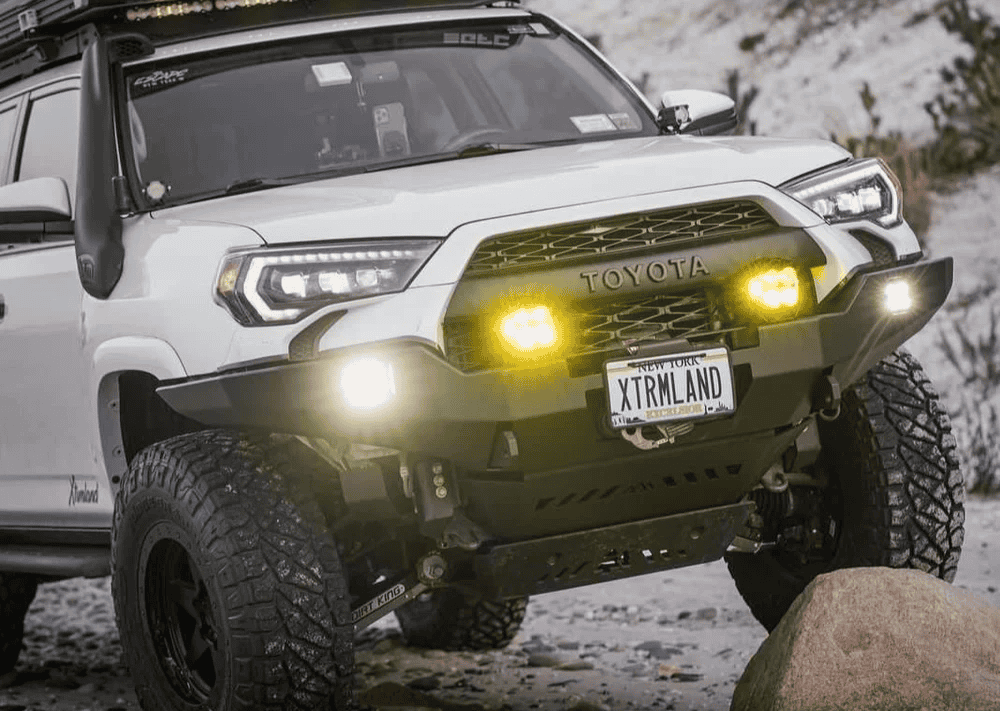Overland Vehicles

A solar and alternator combo blends two complementary energy sources to keep a house battery charged in varied conditions. Solar excels when the sun is high and the rig is parked, silently refilling the bank throughout the day. Alternator charging shines when weather turns gray or tree cover blocks the roof, using engine runtime to deliver steady current. Together they close the gap between daily loads and available harvest, reducing generator time and keeping batteries healthier.
A modern DC to DC charger sits between the vehicle starting system and the house battery to regulate current and set the proper voltage for the chemistry in use. This protects sensitive electronics, avoids overdraw on smart alternators, and ensures consistent multi stage charging. The result is predictable performance whether you drive an hour to the trail or make a full day push across the state.
The DC to DC unit isolates the starting battery, monitors input voltage, and delivers a staged charge to the house bank. Many models accept solar input as well, acting as a single brain for both sources. With correct programming, it can alternate or combine inputs to maintain safe voltage and temperature targets.
Lithium iron phosphate prefers constant current to a defined absorption voltage, then a short absorption hold and no long float. AGM needs a longer absorption period and a modest float. Setting the right profile prevents undercharge, sulfation, or thermal runaway and preserves cycle life.
Right sizing begins with a simple audit. Add up daily loads for refrigeration, fans, water pump, lights, charging devices, and any cooking or heat sources if they are electric. Convert watts to amp hours at battery voltage and add a safety margin. Next, estimate solar harvest based on array size, climate, and roof angle. In many regions, a 200 to 400 watt array nets 40 to 120 amp hours on a typical sunny day, less in winter or shade.
Alternator charging fills the rest. A DC to DC charger rated 30 to 60 amps can replenish a moderate bank during normal drive time without overstressing the alternator. Consider your travel profile. If you move most days, alternator current can carry a larger share. If you park for several days, lean heavier on solar and capacity. Balance comes from matching battery size to expected intake and usage, not from chasing the biggest numbers.
A compact camper using 60 to 80 amp hours per day could pair 200 to 300 watts of solar with a 30 amp DC to DC charger and a 200 to 300 amp hour lithium bank. A moto hauler or family rig drawing 120 to 180 amp hours might choose 400 to 600 watts of solar, a 40 to 60 amp DC to DC charger, and a 300 to 400 amp hour bank. These are starting points that adjust with climate and habits.
Good wiring practice makes or breaks reliability. Use marine grade cable sized for voltage drop under continuous current, protect every positive run with a properly rated fuse or breaker, and route for abrasion protection and service access. Place the DC to DC charger near the house bank to reduce heat and loss. Provide ventilation for all electronics and keep battery temperature within the recommended window.
Vehicles with smart alternators require voltage sensing or an ignition trigger to wake the DC to DC unit only when the engine is running. Add a start battery protection threshold so the vehicle can always start. Include a master disconnect, a shunt for accurate monitoring, and labeled service points so troubleshooting is fast in the field.
Many modern vans modulate alternator output for fuel efficiency. A proper DC to DC charger solves this by drawing a stable current regardless of alternator voltage swings. This protects both the vehicle and the house system and ensures the combo delivers the promised energy on every drive.
Designing a solar and alternator combo is part math, part packaging, and part real world testing. The best systems account for roof real estate, cable paths, heat management, and the way you actually travel. If your adventures cross climates and terrain, a properly integrated combo keeps the fridge cold, the cabin comfortable, and the devices charged without babysitting the system.
When you are ready to turn that plan into a dependable build, work with a shop that installs and tests these systems under load. Our team integrates power systems within complete overland and van builds, optimizing charge paths, monitoring, and protection so you can focus on the trip. Explore what we create on our Overland rigs page here: Overland rigs. If you need a tailored electrical package within a larger project, see our Custom overland upfit options, from battery banks to roof arrays and vehicle specific wiring. Curious about process and standards before you commit? Learn more at Why choose OZK Customs.
Tell us how you travel and what you need to run all day. We will design and install a solar and alternator combo that fits your rig, routes, and season, then hand you the keys with a walkthrough so you leave ready to roam. Submit the form and we will map your energy budget, specify components, and schedule your install.
Ready for worry free power on every trip? Tell us how you travel and our team will design and install a balanced solar and alternator combo that fits your routes, climate, and gear. Submit the form to schedule a consult and get a precise quote for your custom build or partial upfit.
ADDRESS:
6159 E Huntsville Rd, Fayetteville, AR 72701
PHONE:
(479) 326-9200
EMAIL:
info@ozkvans.com